Uli Gwinner, President of Steelcase Asia Pacific talks about the company’s defining moments and why people are at the centre of their business.

March 26th, 2014
What is Steelcase’s point of difference?
Steelcase is more than just being about tools and what they can do. Our focus is on human insights and the ways we can unlock human promise. In order to truly design products that provide great experiences, we employ a human centred approach that involves understanding and observing behaviors, synthesising the results and finally realising the solution. We go through this process for each and every one of our products.
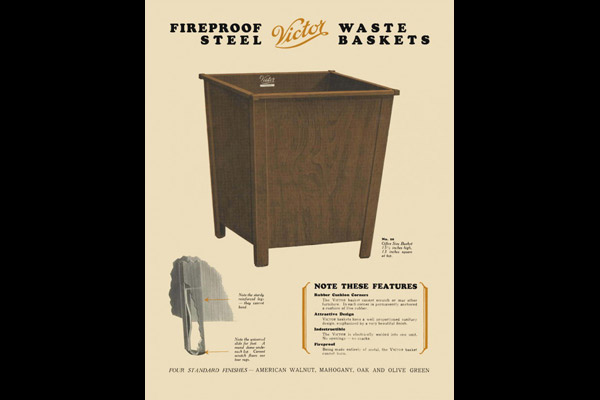
Victor (1914) was a steel waste basket and the first product launched by Steelcase. It soon became a top seller
Research appears to be a strong focus of the business.
Research is a fundamental component of our business. We’ve become leaders in our industry because of our strong understanding of how people work, an understanding that is possible only with research. The insights we derive from this research enable us to create products and spaces that allow the true potential of workers to be realised.
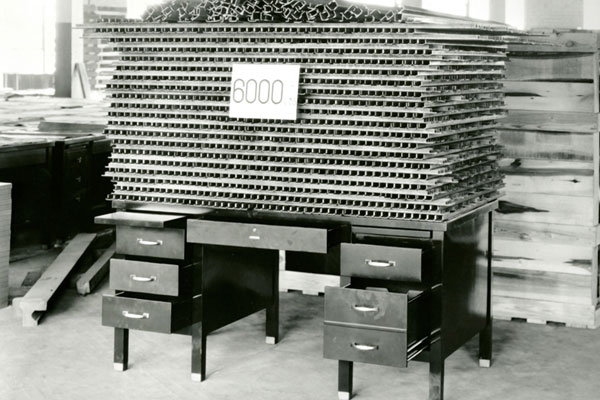
The 621 desk (1914) was the start of the company’s ongoing commitment to strength and durability. The desk was fireproof and could support up to 6,000 pounds
Steelcase marked its 100th anniversary in 2012. Looking back, what have been pivotal moments for the company?
We’re in our 102nd year now and there have been many pivotal moments that have shaped who we are today. The most recent moment happened this month when Jim Keane became the new CEO following Jim Hackett’s retirement, although he (Jim Hackett) remains on the board of directors.
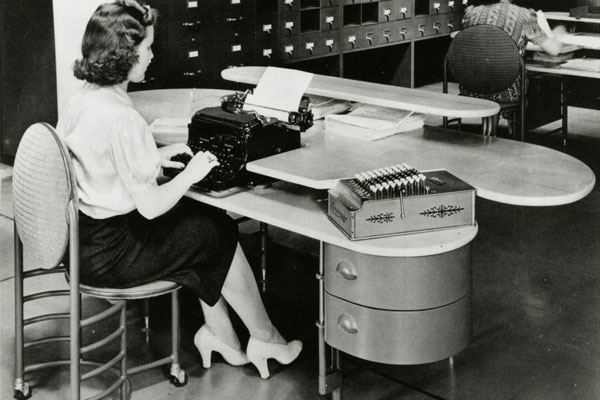
Partnering with Frank Lloyd Wright, Steelcase was the first to design task-oriented furniture, the genesis of the modern workstation (1937)
How much have workplace patterns changed, especially in recent years, and how has Steelcase responded to these changes?
There are several workplace issues happening today but the key ones that companies are facing are the need to optimise real estate, enhance collaboration, attract, develop and retain staff and the general issue of wellbeing. To address these challenges, we’ve developed a concept called the Interconnected Workplace. The interconnected workplace provides an environment of interrelated spaces and solutions that gives users choice and control over where and how they work. The spaces around the workplace are separated into four types: I owned, I shared, we owned and we shared. Depending on the company and industry, the ratio of percentage of real estate devoted to each type will vary. Working together with architects and designers, this forms the basis for workspace planning.
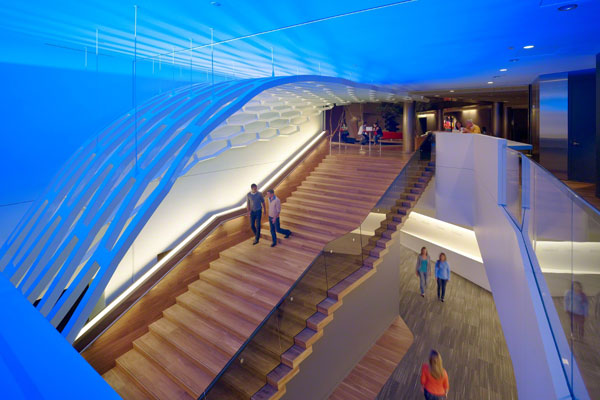
Opened in 1983, Steelcase’s corporate headquarters in Michigan remains today a textbook example of how to organise human resources in the optimum work environment
Where are we heading in terms of workplace trends? Are present patterns slowly shifting?
Offices went from one end of the spectrum with traditional private offices and cubicles to the extreme opposite with completely open plans. We’re starting to see the trend move a little back towards the traditional end, because people did not have areas where they could go to do focused work. To provide for this, the Interconnected Workplace offers a palette of places for people to work.
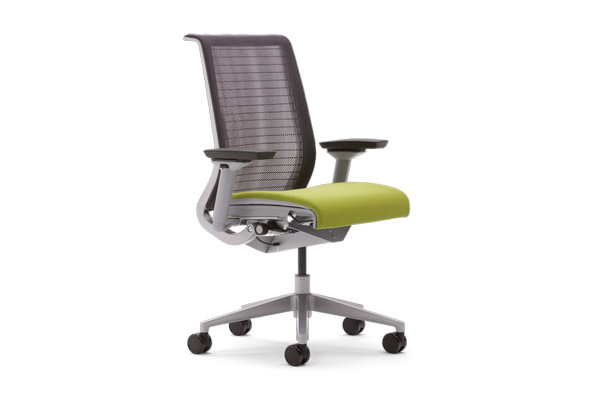
Think (2004), a 99% recyclable chair, was the company’s first truly global product and reflected their focus on sustainability
Which have been some of the most successful Steelcase products, and why?
There are numerous products that have contributed to the success that we’ve enjoyed over the years. A few that made a big impact, not just on the company, but for the industry were the Multiple 15 Desk, Leap Chair, and Gesture.
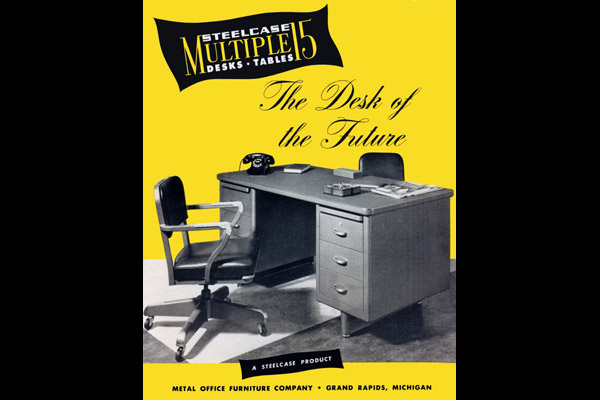
The Multiple 15 Desk set the standard for the modern office when it was first launched in the 1940s
The Multiple 15 Desk was a postwar desk that was in design for four years before launching in 1946. It was designed on 15-inch dimensions allowing for better space planning in open offices. By 1960, it became the universal standard in the industry and was called “the most important contribution to modern office planning.”
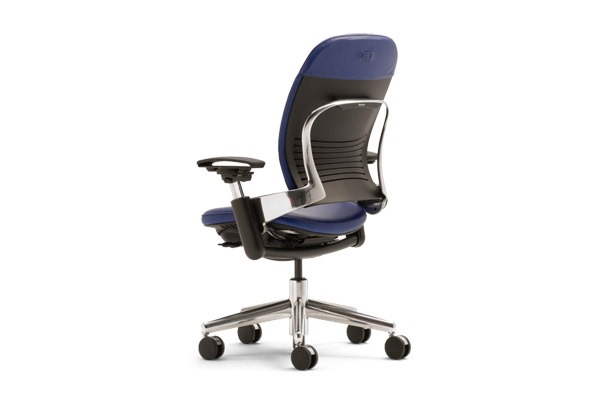
The Leap Chair (1999) has earned the title of the ‘most successful chair’ in Steelcase’s history
The Leap Chair is a revolutionary high performance task chair that was introduced in 1999. Leap seating technology has 23 patents and because of revolutionary LiveBack technology that separately supports the user’s upper and lower back, Leap provides support according to the way the spine moves, a new dimension of ergonomics never before felt. This technology has since been licensed for use in automotive and commercial airline seating. Leap eventually became the most successful chair in our history.
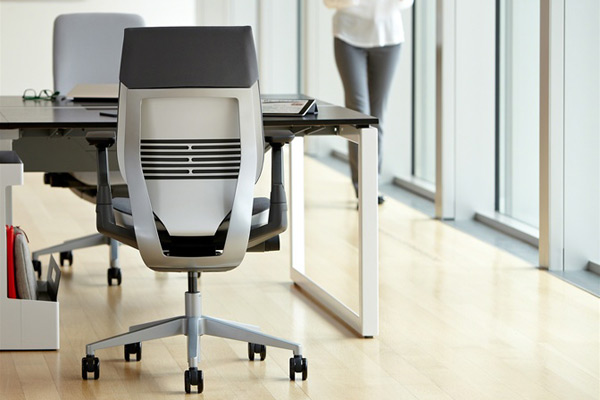
The company’s most recent product, Gesture, is a task chair designed to accommodate new postures in the workplace brought on by the usage of today’s technologies
Our latest product to be released is Gesture and although it was only recently launched, we’re already starting to see the impact that it will have on the workplace. Gesture is our latest task chair and the first to be designed for the way we interact with today’s technologies (e.g. smartphones, tablets, etc.). In the four years of research put into Gesture and the live trials we’ve done with real clients, Gesture has received nothing short of highly positive praise. The high demand for Gesture at this time is a positive sign of the things to come for this revolutionary chair.
Are there products that have been particularly successful in Asia, and why?
The Leap Chair has been one of the most popular products we’ve sold in Asia, especially with recent focus on ergonomics and wellbeing in the workplace. Many global companies also have offices throughout Asia and one of the difficulties they have faced is addressing the time and geographic differences in order to collaborate. As a result, Media:scape has been a very popular product to reduce that tension and facilitate collaboration.
Steelcase
steelcase.asia
INDESIGN is on instagram
Follow @indesignlive
A searchable and comprehensive guide for specifying leading products and their suppliers
Keep up to date with the latest and greatest from our industry BFF's!
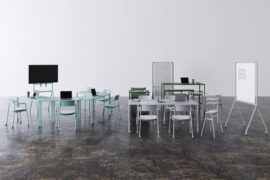
Welcomed to the Australian design scene in 2024, Kokuyo is set to redefine collaboration, bringing its unique blend of colour and function to individuals and corporations, designed to be used Any Way!

For Aidan Mawhinney, the secret ingredient to Living Edge’s success “comes down to people, product and place.” As the brand celebrates a significant 25-year milestone, it’s that commitment to authentic, sustainable design – and the people behind it all – that continues to anchor its legacy.

With Steelcase having reopened its refreshed WorkLife Showroom in Singapore this year, we spoke to Navedita Shergill about some key workplace macro shifts identified in their research.

Matching style with a capacity to maximise workplace performance, these office chairs lead the field in terms of carbon abatement and sustainability.

It was a night to remember as the 2024 INDE.Awards gala delivered an amazing evening of architecture and design, and also provided the opportunity to renew connections, make new friends and just have fun!

The winners of the 2024 INDE.Awards were announced at a spectacular gala hosted by The Ritz-Carlton, Melbourne, Australia. Discover the exemplary projects, people and products that reflect the diversity of the Indo-Pacific.
The internet never sleeps! Here's the stuff you might have missed
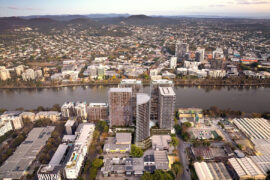
Plus Studio and ICD Property have submitted a proposal for a development on Brisbane’s Donkin Street, using a 1.68-hectare former industrial site as a new riverside residential and community destination.

‘The Mandate Mirage: 2025 Workplace Futures Survey’ is a new report by international design practice Hassell, revealing that the real drawcard for attracting employees to the office in-person is choice.